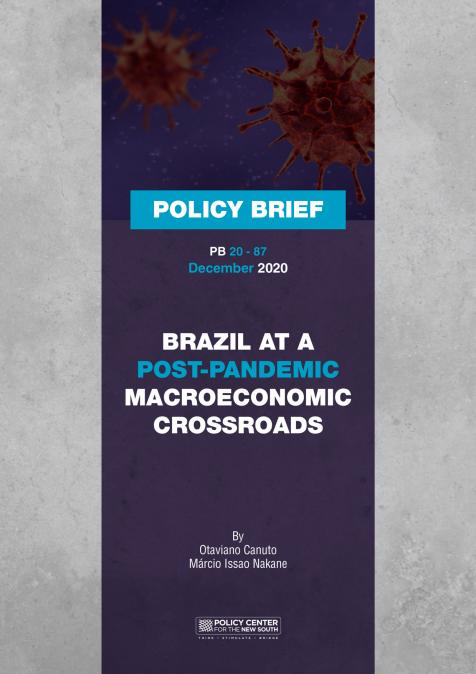Publications /
Policy Brief
Brazil is one of the countries hardest hit by COVID-19. Apart from the dramatic health implications, COVID-19 will also scar the Brazilian economy, including through a jump in its already high public-sector debt-to-GDP ratio in 2020. Moving forward—or not—with structural reforms aimed at lifting private investment will define whether a sustainableor unsustainable—growth-cum-debt trajectory will prevail in the next decade. The extent to which Brazil regains its attractiveness for foreign investors will play a key role.
COVID-19 has significantly hit Brazil’s economy, leading to substantial gross domestic product (GDP) decline in 2020. The country’s post-pandemic GDP trajectory for the next decade will be at levels below what was expected prior to COVID-19.
Figure 1 shows the November 2020 GDP forecasts of the Brazilian Senate’s Independent Fiscal Institution (IFI in Portuguese; IFI, 2020). As a baseline forecast, GDP is expected to fall by 5.0% in 2020, only partially recovered with a 2.8% growth rate in 2021. GDP is predicted to return to the pre-COVID-19 level only in 2022.
Depending on the length of the still unfolding pandemic and its impact on the economy, and on the effectiveness of the policies so far implemented to flatten the recession curve, optimistic and pessimistic GDP growth scenarios are also offered: -4.2% and 3.7% for 2020 and 2021 respectively in the optimistic scenario, and -5.5% and 1.8% for 2020 and 2021 respectively in the pessimistic scenario.
The December 4 expectations survey carried out by the Brazilian Central Bank reveals that market participants expect GDP growth of -4.4% and 3.5% for 2020 and 2021 respectively. These figures are closer to the upper optimistic interval reported by the IFI than to its baseline scenario, signaling that market participants expect faster economic recovery from the pandemic shock.
In the baseline scenario, the annual potential GDP growth rate for 2023-30 is estimated by the IFI at 2.3%, with the inflation rate and basic real interest rates assumed to converge to 3.5% per year and 3.0% per year respectively. Such figures are lifted (downgraded) in the optimistic (pessimistic) scenarios, depending on how favorably (unfavorably) country-risk premiums affect exchange rates, inflation, and real interest rates (Figure 1). In the optimistic scenario, the annual potential GDP growth rate for 2023-30 is raised to 3.5%, with the inflation rate and basic real interest rates predicted to converge to the lower levels (compared to the baseline) of 3.2% per year and 2.4% per year respectively. In contrast, in the pessimistic scenario the annual potential GDP growth rate for 202330 would be only 1.3%, with the inflation rate and basic real interest rates supposed to rise to the higher values (compared to the baseline) of 4.5% per year and 5.1% per year respectively.






